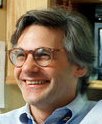

Obituary
Service Information
When
Tuesday, December 3rd, 2013 10:00am
Officiating
Rabbi Jeffrey Sirkman
Location
Larchmont Temple
Address
75 Larchmont Ave.
Larchmont, NY 10538
Service Extra Info
Interment in private
Obituary of Peter Wennik Kaplan
Peter W. Kaplan, who in his 15 years as editor was credited with making The New York Observer both pertinent and impertinent as it gleefully chronicled the every move and shake of the city's movers and shakers, died on Friday in Manhattan. He was 59.
The cause was cancer, his brother James said.
Founded in 1987 by the investment banker Arthur L. Carter, The Observer, in the words of its website, observer.com, seeks to report on "finance, media, real estate, politics, society, tech and culture with an insider's perspective, a keen sense of curiosity and a sharp wit." Published weekly on pinkish paper that in its smoked-salmon hue trumpets Gotham, it reaches a primarily high-income readership.
Though its circulation has long been small — about 50,000 in Mr. Kaplan's day and only slightly higher now — the newspaper became, under his stewardship, required reading for the very demographic it skewered.
Appointed in 1994, Mr. Kaplan served the longest term of any Observer editor. During his tenure the paper featured the work of journalists renowned for a cutting-edge sensibility, among them Joe Conason, now the editor in chief of the political website The National Memo; Nikki Finke, who went on to found the entertainment-industry site now known as Deadline.com; and Choire Sicha, who later helped found The Awl, the current-events site.
The vigorously reported, tart-tongued coverage of New York's power elites that Mr. Kaplan helped bring to The Observer prefigured the work of many websites devoted to politics, culture and the press.
"It's hard to find a major publication right now, in print or online, that's not in some way flavored by the old Observer," The New Republic wrote in a profile of Mr. Kaplan last year. "Subtract Kaplan from the media landscape of the past 20 years and you lose The Awl, much of Gawker and a good bit of Politico, too."
When The Observer began, it was intended to be a hyperlocal Manhattan affair. In light of what it later became, its early tone and purview — community board meetings loomed somewhat large in its coverage — seem almost bucolic.
Esteemed as a mentor to writers, Mr. Kaplan, by all accounts, helped usher in a delectable dose of snark. Writing about The Observer in The New York Times in 2006, David Carr called him "the man who turned it into a maypole of Manhattan gossip and intrigue."
Among Mr. Kaplan's greatest coups was hiring a little-known freelance writer named Candace Bushnell to write a column about the hunt for love, or something approximately like it, in the urban jungle. Ms. Bushnell's column, "Sex and the City," which appeared in The Observer from 1994 to 1996, became the basis for the hit HBO series starring Sarah Jessica Parker.
"The more cancellations we got for her column," Mr. Kaplan wrote in an essay in New York magazine in 2011, "the more the paper knew we had hit the jackpot."
Though he went on to help carry The Observer across the digital threshold, overseeing the creation of its website, Mr. Kaplan was regarded by those who knew him as a throwback to an earlier age — to the New York of the Stork Club, the Automat and the Algonquin. He revered the stuff of that era, from classic black-and-white films that portrayed the city at its noirish finest (he knew the credits of nearly all of them by heart) to newspapers as they were originally conceived: damp, sweet-smelling and black and white, or, in his case, black and pink.
Mr. Kaplan remained with The Observer after it passed into the hands of a new owner — Jared Kushner, then 25 — in 2006, and through its transformation from a broadsheet into a tabloid the next year. When he left the newspaper in 2009, amid a retrenchment that entailed staff cuts and shorter articles, his departure appeared to many in the industry to herald the last heady days of a certain brand of old-school print journalism.
Peter Wennik Kaplan was born in Manhattan on Feb. 10, 1954, and reared primarily in northern New Jersey. At Harvard, where he received a bachelor's degree in American studies, he was a stringer for Time magazine; he also ran a campus film society, named for the Hollywood screenwriter Herman J. Mankiewicz, that specialized in showing the most obscure movies possible.
Before joining The Observer, Mr. Kaplan was a reporter at The Times, for which he covered the television industry in the mid-1980s; the executive editor of the business magazine Manhattan,inc.; and the executive producer of Charlie Rose's PBS talk show.
After leaving The Observer, Mr. Kaplan was the editorial creative director at Condé Nast Traveler. In 2010, he was named editorial director of the Fairchild Fashion Group (now Fairchild Fashion Media, a division of Condé Nast Publications), where his portfolio included Women's Wear Daily, WWD.com, Footwear News and Fairchild Books.
At Fairchild, Mr. Kaplan oversaw the relaunch last year of M magazine, a glossy quarterly aimed at affluent men.
Mr. Kaplan's marriage to Audrey Walker ended in divorce. Besides his brother James, a novelist and biographer, survivors include his second wife, Lisa Chase, whom he married last year; their son, David; three children from his marriage to Ms. Walker, Caroline Kaplan, Charles Kaplan and Peter Walker Kaplan; and another brother, Robert.
Though he had long made his home in suburban Larchmont, N.Y., Mr. Kaplan never stopped regarding New York City as a shimmering object of desire. Decades afterward, looking back on boyhood car trips into town, he recalled his father's words on seeing the Manhattan skyline rear up on the horizon:
"There's the Emerald City."
And for the son, so it was.
By MARGALIT FOX
Published: November 29, 2013
